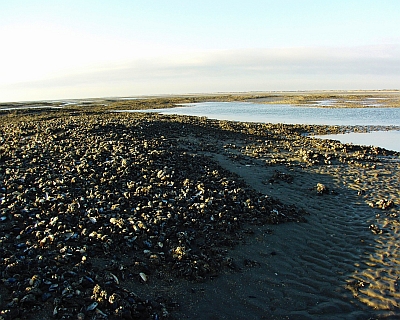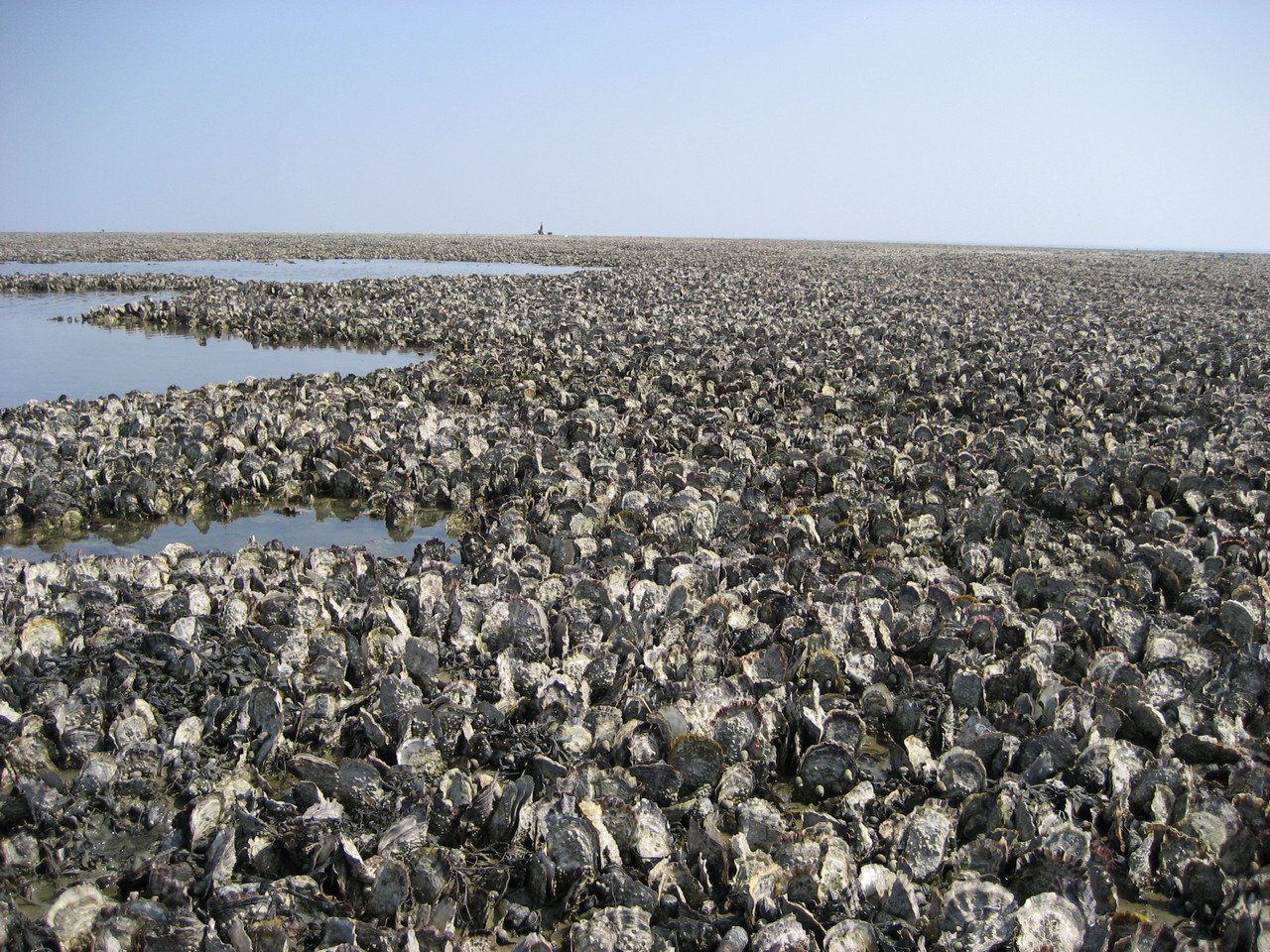Supplément 4.2: Bancs de moules et récifs d'huîtres
Bancs de moules
Il peut s'agir d'un ensemble irrégulier, bien délimité dans l'espace, de bancs plus petits plus ou moins saillants, que l'on peut appeler parcelles, séparés par des espaces ouverts.
Cette description inclut également les jeunes bancs présentant une forte abondance de petites moules. La structure décrite peut ne pas être distincte dans les jeunes bancs ou les bancs nouvellement formés.

Photo: Nationalpark Niedersächsisches Wattenmeer
Dans des conditions naturelles, les limites des bancs de moules et des zones intertidales environnantes ne sont pas toujours clairement définies. C'est pourquoi les scientifiques ont élaboré des critères afin de prendre des décisions standardisées concernant les limites des bancs de moules lors des études sur le terrain :
Récifs d'huîtres
Le terme récif a été introduit à l'origine dans le domaine maritime et désigne tout type de haut-fond, par exemple un banc de sable. En biologie et en géologie,
Ces reliefs ont donc une structure organique consolidée qui persiste après la mort des organismes. Les récifs se forment généralement dans les eaux peu profondes, mais il existe également des récifs en eaux profondes et des récifs en eaux froides.
Quatre processus simultanés interviennent dans la formation des récifs : l'accumulation, la dégradation, la sédimentation et la cimentation.
- Processus de construction (formation de récifs ou ingénierie) : formation de la structure primaire par des organismes colonisateurs, formation de la structure secondaire par incrustation, remplissage avec des particules de carbonate et accumulation de sédiments.
- Processus destructeurs : destruction physique à proximité de la surface de la mer par les vagues et les courants. Les tempêtes peuvent avoir des effets importants à court terme sur les récifs. Cependant, le taux d'érosion est presque identique à celui des processus constructifs.
- La sédimentation de particules individuelles est responsable de la formation effective d'une structure récifale. Les particules proviennent des résidus organiques des organismes et de la destruction du corps récifal. Les matériaux fins peuvent être transportés dans les interstices du récif et les remplir.
- La cimentation est le processus de dépôt de composants minéraux dissous dans les interstices de la structure récifale. Ce processus confère à la structure une résistance aux vagues.
L'huître creuse du Pacifique (Crassostrea gigas) est un exemple de ce qu'on appelle un constructeur de récifs ou un ingénieur de l'écosystème.

